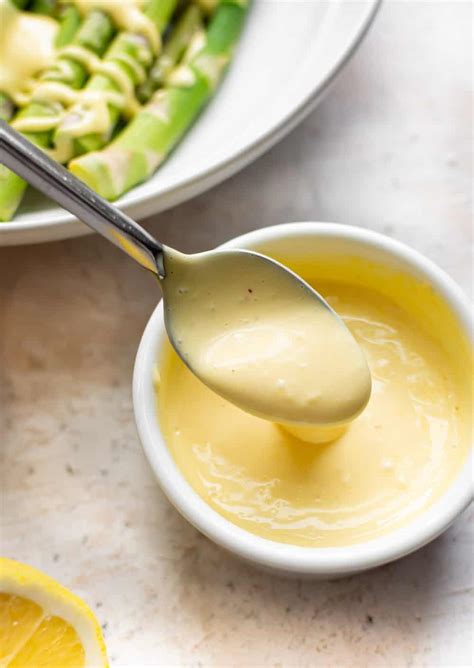Hollandaise Sauce: A Classic Recipe for Restaurant-Quality Results at Home
The rich, luxurious taste of hollandaise sauce elevates any dish from simple eggs Benedict to grilled asparagus. While it might seem intimidating, mastering this classic emulsion is easier than you think. This guide will walk you through creating a perfect hollandaise sauce every time, complete with tips and tricks for success. Let's dive in!
Understanding the Basics of Hollandaise Sauce
Hollandaise is an emulsion, meaning it's a stable mixture of two liquids that don't normally mix, in this case, butter and egg yolks. The egg yolks act as an emulsifier, binding the fat molecules in the butter to create a smooth, creamy texture. The key to success lies in gentle, consistent whisking and controlling the temperature.
Key Ingredients:
- Egg Yolks: Provide the emulsifying power and richness. Use fresh, high-quality yolks for best results.
- Butter: Provides the richness and creaminess. Use unsalted butter for better control over the saltiness of the final sauce. Clarified butter is ideal for a cleaner flavor profile, preventing any milky sediment.
- Lemon Juice: Adds brightness and acidity, balancing the richness of the butter and yolks. Freshly squeezed is always best.
- Cayenne Pepper (optional): A pinch adds a subtle warmth and depth of flavor.
- Salt and White Pepper: Seasoning to taste, enhancing the overall flavor profile.
Step-by-Step Hollandaise Sauce Recipe
This recipe provides clear instructions for making a delicious hollandaise sauce.
Yields: Approximately 1 cup Prep time: 5 minutes Cook time: 5-7 minutes
Ingredients:
- 3 large egg yolks
- 1 tablespoon lemon juice
- Pinch of cayenne pepper (optional)
- 1 cup (2 sticks) unsalted butter, melted and kept warm (but not hot)
- Salt and freshly ground white pepper to taste
Equipment:
- Double boiler or heatproof bowl set over a pan of simmering water
- Whisk
- Small saucepan
Instructions:
-
Prepare the Egg Yolk Mixture: In a heatproof bowl (or the top of a double boiler), whisk together the egg yolks, lemon juice, and cayenne pepper (if using) until light and frothy.
-
Whisk Over Low Heat: Place the bowl over a pan of barely simmering water (make sure the bottom of the bowl doesn't touch the water). Whisk constantly until the mixture thickens and becomes pale yellow and slightly creamy. This takes around 3 to 5 minutes. The mixture should coat the back of a spoon.
-
Slowly Incorporate the Butter: Remove the bowl from the heat. With the whisk constantly turning, begin drizzling in the warm, melted butter, a tablespoon at a time. This is crucial: Don't add the butter too quickly, or the sauce may break. The whisk continuously emulsifies the mixture, creating that signature creamy texture.
-
Season and Serve: Once all the butter is incorporated, season the hollandaise sauce generously with salt and freshly ground white pepper. Taste and adjust seasonings as needed. Serve immediately, or keep warm in a double boiler over very low heat.
Tips for Hollandaise Sauce Success:
- Room Temperature Eggs: Using room-temperature egg yolks helps with emulsification.
- Don't Overheat: Overheating will scramble the eggs and ruin the sauce. Keep the water simmering gently, and use low heat.
- Broken Sauce: If your sauce breaks (separates), don't panic! Quickly whisk in a teaspoon or two of hot water and continue whisking until it re-emulsifies.
- Storage: Hollandaise is best served fresh, but leftovers can be stored in an airtight container in the refrigerator for up to 1 day. Gently reheat in a double boiler before serving.
Serving Suggestions
Hollandaise sauce perfectly complements a variety of dishes:
- Eggs Benedict: A classic pairing, the rich sauce complements the poached eggs and English muffins beautifully.
- Grilled Asparagus: The sauce adds a touch of luxury to the simple yet elegant asparagus.
- Salmon: A wonderful complement to both poached and grilled salmon.
- Vegetables: Try it with roasted vegetables like broccoli or cauliflower.
Mastering hollandaise sauce is a rewarding culinary experience. With a little patience and practice, you'll be creating restaurant-quality hollandaise at home in no time!
